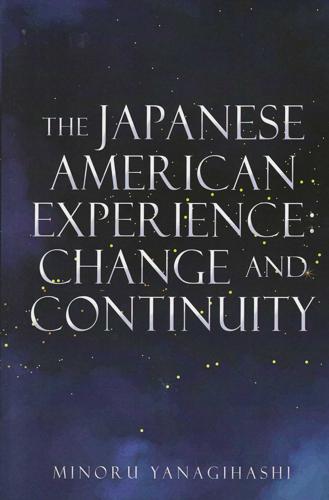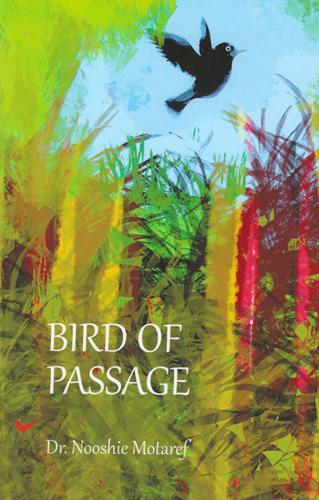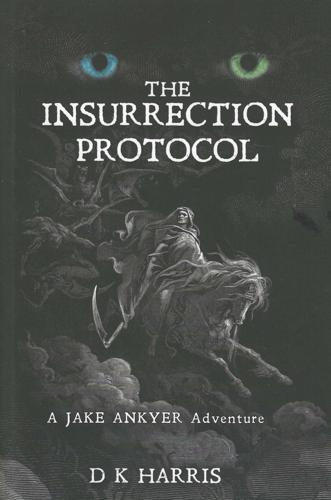“Fair Play: A Cat Miranda Mystery #2” by C.J. Shane. Rope’s End Publishing. 208 pages. $19.99; $14.99 paperback; $4.99 Kindle.
Bisbee’s popular (and only) attorney has been found beaten to within an inch of his life for reasons that are clear to exactly no one — but Cat Miranda plans to get to the bottom of the attack on her old school chum in this latest outing for C.J. Shane’s full-time art gallery owner and part-time sleuth. In the company of her handsome British novio (she resists calling him her boyfriend because it feels silly), Cat learns that peaceful Bisbee has been the scene of other, seemingly unrelated crimes, including the apparently random and brutal murder of a young couple and the theft of a painting from her own gallery. It’s a bewildering series of dots to connect, one that will take a village of friends, neighbors, a former British police detective and a newly-acquired Great Dane (engaging characters all) to help Cat separate the clues from the red herrings.
Shane’s lively storytelling takes her irresistible heroine along a dangerous path to the center of a nefarious scheme ripped straight from the headlines.
Author and visual artist C.J. Shane, a former newspaper reporter and academic reference librarian, is the author of eight nonfiction books, as well as the “Letty Valdez, Tucson Investigator” mystery series. She lives in Tucson.
— Helene Woodhams
“The Japanese American Experience: Change and Continuity” by Minoru Yanagihashi. Liberty Hill Publishing. 274 pages. $17.49; Kindle $8.99.
In a little less than 100 years, the Nisei — American-born children of Japanese immigrant parents — achieved remarkable success in the United States despite enormous obstacles. So opines author, educator and U.S. Army veteran Minoru Yanagihashi, and he explains how in this informative volume of history, sociology and personal reflections.
The Japanese arrived in Hawaii looking for economic stability; by 1900, they accounted for 40% of Hawaii’s population. Yanagihashi, who was born in Hawaii to Japanese immigrant parents, begins with an overview of how the experiences of the Japanese who settled in Hawaii differed from the experiences of those who moved on to the mainland. His primary focus is on Nisei born between the 1920s and the start of World War II, a group he likens to Tom Brokaw’s “Greatest Generation” for their resilience in the face of racism, exclusionary policies and the dystopian experience of war-time internment by their own government.
Of particular interest is the author’s discussion of Arizona’s Poston and Gila River internment camps, the Leupp Isolation Center on the Navajo Reservation, and the prison work camp in the Santa Catalina Mountains. But it is his observations of the post-war Japanese-American experience that are perhaps most revealing. As the sands of time run out for this generation of Nisei, their crowning achievement has been to assimilate into American society while preserving Japanese culture and tradition for future generations. The passing of this baton is meaningful for the author, who is a charter member of the Pan-Asian Community Alliance, the Japan-America Society of Tucson and the Southern Arizona Japanese Cultural Coalition.
— Helene Woodhams
“Bird of Passage” by Nooshie Motaref. A3D Impressions. 215 pages. $14.95.
That Zoroastrianism and Mohammad’s Islam — the religions of ancient Persia — were more enlightened than 20th century Islam in Iran is a thread that runs through and enhances this engaging and timely novel. “Bird of Passage” features a young woman resisting the strictures of Iran’s 1979 religious revolution. Tucson author Nooshie Motaref, who herself left her university position in Tehran due to Iranian fundamentalist pressure 30 years ago, creates central character Mitra who flees Iran for the West in search of personal and intellectual independence.
Defying her culture but encouraged by her parents, Mitra pursues education rather than marriage, but she’s not averse to romance. Motaref mixes mythology, a tale of romance and a bit of danger with cultural criticism and contrast — East to West; the Shah to Khomeini; women’s rights through history; the Islamic revolution to current women’s protests. That would make “Bird of Passage” a natural for a book club selection.
— Christine Wald-Hopkins
“The Insurrection Protocol” by D K Harris. Kindle Direct Publishing/Amazon, Inc. 390 pages. $13.85.
D K Harris throws together some unlikely ingredients in this second Jake Ankyer action adventure: a biologically-enhanced 21st century U.S. special operative, guided by satellite communication, accompanied by a trained wolf in Kevlar, atop a white stallion, armed with a crossbow, fighting Qatari slave traders in the Libyan desert. Throw in a paranoid, narcissistic U.S. president fuming because he can’t get Mt. Rushmore’d or awarded the Nobel Peace Prize and a nefarious, rich, ambitious, female executive who’s in cahoots with the Chinese, along with super advanced quantum computers, and you’ve got yourself an adventure stew.
Jake Ankyer is a member of the Red Protocol Group, a small, secret NSA branch dedicated to thwarting threats to American democracy. In “The Insurrection Protocol,” set in 2017, it’s tasked with preventing an unhinged POTUS from killing off his cabinet and Congressional leaders and declaring martial law. As the rest of the Red Protocol band catalyze their considerable computing, analyzing and infiltrating skills, Jake heads to Libya to rescue the kidnapped grandson of the Emir of Qatar. Flying body parts, vomited stomachs, and exploding heads ensue, along with flaming race car wheels, and the need to land a jet fighter on an aircraft carrier during a Category 5 hurricane. It’s a good thing Jake is on it.
Harris clearly likes his smart Red Protocol crew. And, yes, they are high-energy, nonstop entertaining. Did I mention Jake’s new Qatari sheikh-dom in that stew? It comes with a 60,000 square-foot palace and full complement of luxury cars. Ten to one we’ll see more of that in the next-in-the-Jake Ankyer series.
— Christine Wald-Hopkins
“A Southern Story: Family and Race, ca. 1650-2021” by Sterling Vinson. Resource Publications. 86 pages. $12. Paperback; also available on Kindle.
“Really,” writes archeologist and retired Pima College instructor Sterling Vinson, in this thoughtful and informative volume, “the United States can never come to terms with its racism until it admits that the South won the war with Union help.
“Yes, the Confederate army was destroyed,” he continues, “…the Confederate government was dissolved and many leaders were jailed. But the Union allowed the social and economic systems of the South to remain unchanged for the next one hundred years.” After Union troops departed, the old power structure resurfaced, he asserts, and the federal government provided Black people no protection. Even now — despite the 1964 and ‘65 Civil Rights and Voting Rights Acts — the Supreme Court gutted the Voting Rights act in 2013. “America can take strong action for a short time but is unwilling to make the sustained effort required to eliminate racism.”
“A Southern Story” is an examination of racism in America through the lens of Vinson’s family history and his life growing up in ‘40s and ‘50s Little Rock, Arkansas. A product of White privilege, descendant of American colonists, he grew up in a grand house, with African-American nannies and household help. He was raised to honor “endurance, resistance and deep suspicion of authority,” but his parents also instilled in him a sense of racial justice. As he would discover, however, his family history has a dark side: slave owners, masters of indentured servants, Confederate soldiers; a member of the KKK; possible involvements in lynching. Leaving the South for a progressive boarding school in Vermont expanded his social awareness, and we see him by the 1990s deeply involved in the sanctuary movement in Tucson.
The book is a valuable and relatable compendium of family stories, Ancestry.com, history and personal reflection. Still engaged in human rights, Vinson suggests that his border and ACLU work are a means of redemption for personal and family transgressions.
— Christine Wald-Hopkins
Helene Woodhams is retired from Pima County Public Library, where she was literary arts librarian and coordinator of Southwest Books of the Year, the library’s annual literature review.
Christine Wald-Hopkins, a former educator and occasional essayist, has long been a book critic for national, regional and local newspapers.








